Pickleball Double Bounce Rule: A Key to Mastering the Game
Pickleball, a sport that blends elements of tennis, badminton, and ping-pong, has rapidly grown in popularity, capturing the hearts of players of all ages. At its core are a unique set of rules that govern how the game is played, designed to encourage strategy and maintain fairness among competitors. One of the most pivotal rules is the pickleball double bounce rule, which plays a critical role in shaping the flow and feel of the game. The double bounce rule ensures that players respect the proper sequence of bounces during gameplay, thus creating a more strategic approach to the sport. In this article, we will explore the intricacies of the double bounce rule, its significance in gameplay, common misconceptions, tactical strategies, and resources for mastering this essential aspect of pickleball. By understanding this rule, players can enhance their gameplay experience, ensuring that they not only adhere to the regulations but also enjoy the richness and excitement that pickleball has to offer.
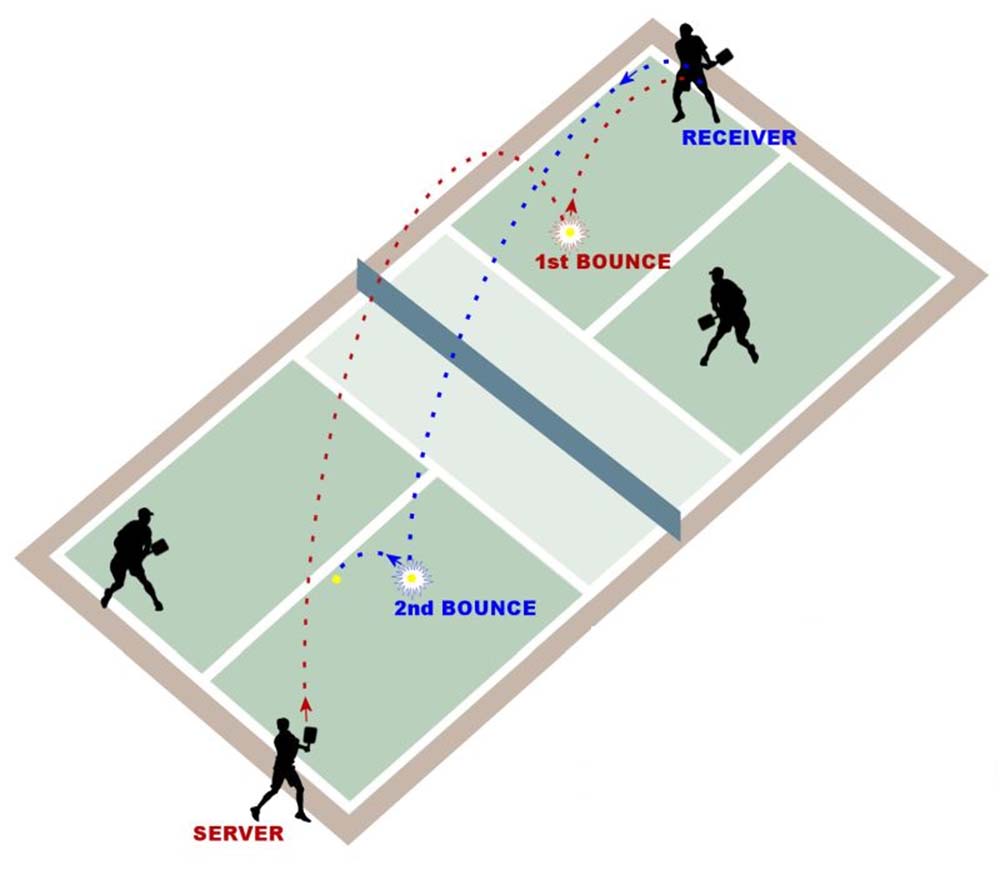
Understanding the Pickleball Double Bounce Rule
The double bounce rule is straightforward yet profoundly impactful in the way it regulates the start of every point in pickleball. This rule dictates that after the serve, each player must allow the ball to bounce once on their side before they hit it. Specifically, after the serving player sends the ball over the net, the receiving player must let it bounce once, and then the server must also let the ball bounce once before returning it. This simple yet critical rule contributes to the game’s pace and strategy, fostering an environment where players must think critically about their positioning and shot selection early in each rally.
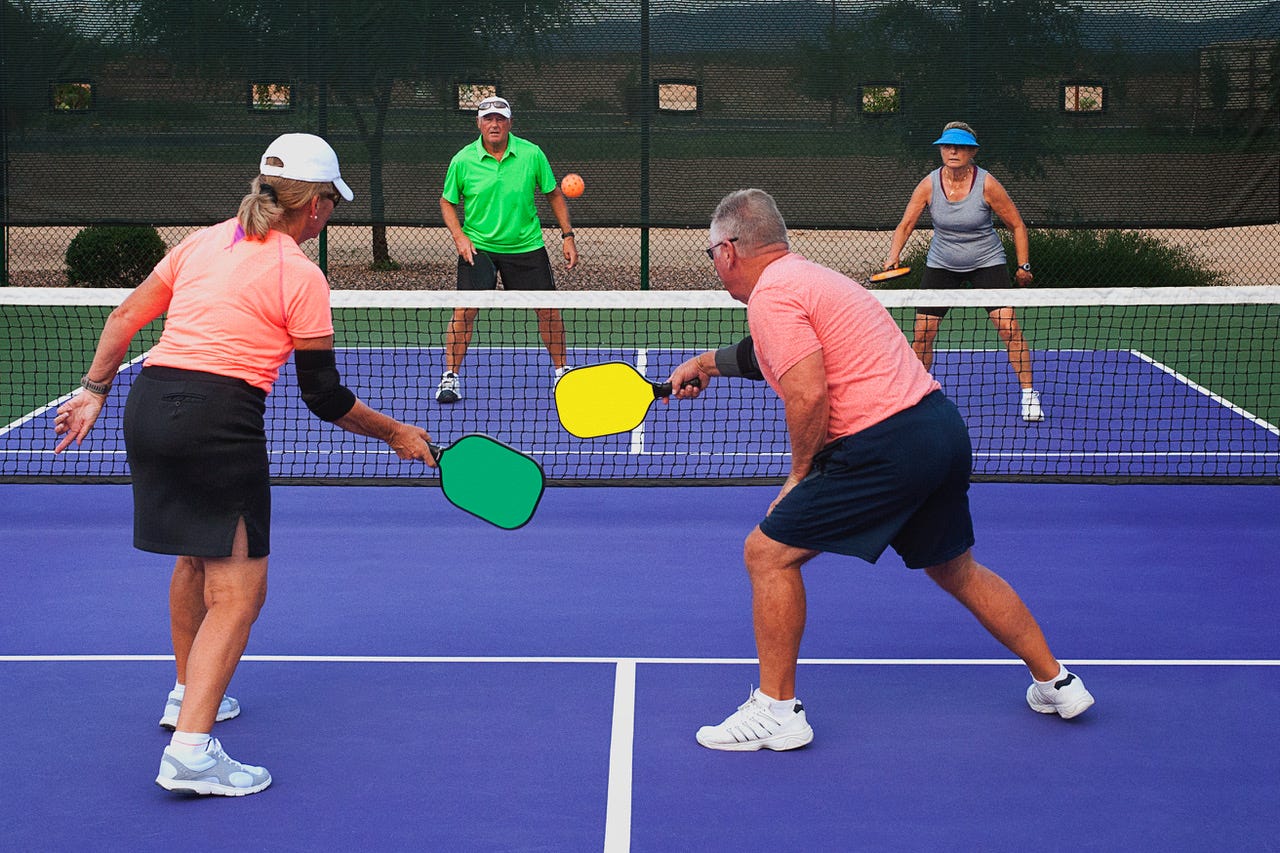
Definition of the Double Bounce Rule
To break down the definition of the double bounce rule further: upon the beginning of a point, the server initiates play by serving the ball diagonally into the opponent’s court. The receiving player must allow this served ball to bounce once before attempting to return it. After the return, the serving player must similarly let this returned ball bounce once on their side before they can hit it back. From this point onward, the game transitions into a more dynamic phase where players are free to engage in volleys, as long as they respect the non-volley zone or “kitchen” regulations.
It’s crucial to understand that this rule aims to ensure fairness and equality at the start of each point; preventing aggressive attack strategies before players have had the chance to establish their positioning. The double bounce rule is essential for fostering a balanced exchange during the early exchanges of each point. It minimizes immediate offensive plays, allowing players to prepare strategically for subsequent volleys. Thus, it establishes a standardized method for initiating rallies that emphasizes skill, positioning, and tactical planning right from the outset.
Importance of the Double Bounce Rule in Gameplay
The importance of the double bounce rule in gameplay cannot be overstated. By enforcing that both players must allow the ball to bounce once on their respective sides, the rule contributes vital dynamics to the game which can significantly enhance player experience. For instance, it ensures that players have a moment to react and position themselves appropriately before the rally progresses into a more rapid exchange. This delay can allow weaker players time to gather their composure, leveling the playing field against more experienced opponents.
Moreover, the rule paves the way for longer rallies. With a mandated bounce, players are afforded a crucial opportunity to assess the situation and develop strategies for countering their opponent’s shots. This not only leads to more exciting, prolonged engagements but also encourages players to refine their skills over time. The anticipation of the first bounce can allow players to execute high-quality shots and develop effective responses that will aid them in future rallies.
Additionally, from a psychological perspective, the double bounce rule introduces an element of suspense into the game. Each bounce serves as a moment for players to adjust their strategies, creating an atmosphere ripe with anticipation. The initial exchanges become a tactical dance rather than mere back-and-forth hits; players must analyze their opponents’ positioning, strengths, and weaknesses, which can lead to exhilarating match experiences.
Common Misconceptions About the Double Bounce Rule
Though the double bounce rule is quite simple in its essence, several common misconceptions can easily arise, leading to confusion and frustration among both novices and seasoned players alike. One misconception is that the ball must bounce twice on the same side of the court before a player can strike it. This misunderstanding can derail the natural flow of play, as players might incorrectly position themselves, thinking they need to wait for additional bounces on their side.
Another common misinterpretation suggests that the double bounce rule applies to the entire rally rather than just the initial plays post-serve. This belief may cause players to mistakenly hold back from volleys or anticipate unexpected bounces during standard exchanges, hampering their overall performance. It’s essential to clarify that the double bounce rule strictly pertains to only the first two bounces of the rally (one on each side), allowing a more aggressive return of shots afterward.
Also, some players might view the rule as a hindrance, feeling as though it slows down their momentum. In reality, the double bounce rule is designed to enhance play rather than hinder it. By offering a moment of reprieve, players can better focus on their shots, strategize, and engage in a more meaningful back-and-forth with their opponents. Adopting this perspective can greatly enrich the gameplay experience and maximize enjoyment on the court.
How the Double Bounce Rule Works
Understanding how the double bounce rule works is crucial for successful gameplay. At its heart, this rule delineates a specific sequence of events that must occur after every serve. This structure ensures uniform play and sets the foundation for competitive strategy. Here is a summarized sequence of events after a serve:
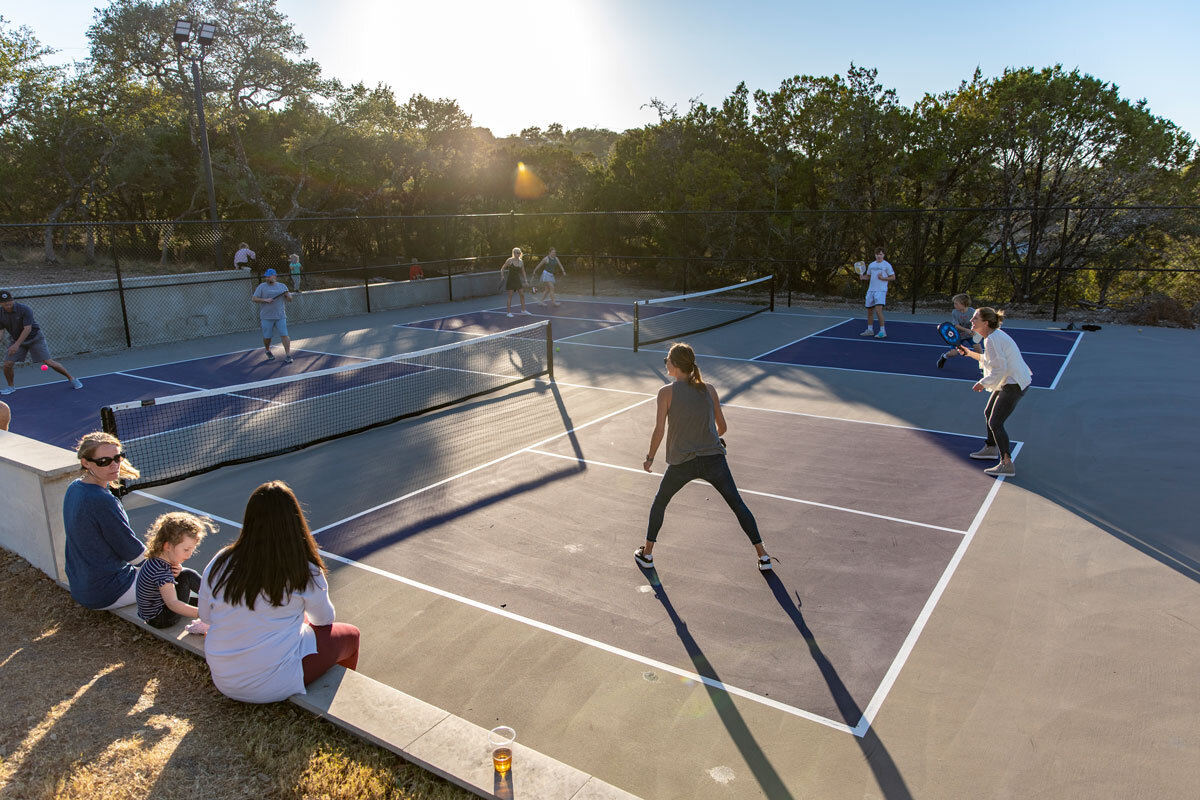
- The serving player begins by serving the ball diagonally into the opponent’s side of the court.
- Upon receiving the serve, the receiving player allows the ball to bounce once on their side before attempting to return it.
- After the return, the serving player must allow the ball to bounce once on their side before executing a return.
- Following these two initial bounces, players are free to volley the ball back and forth as they wish.
These steps are essential for enforcing the rhythm of gameplay and enhancing tactical development.
Sequence of Events After a Serve
To expand on the sequence of events after a serve, let us delve deeper into the specifics of how this rule is implemented. When a player serves, they need to ensure their foot placement is correctly behind the baseline, as any foot-fault could lead to penalties that invalidate the serve. The serve must cross the center line and land within the confines of the opponent’s service court, setting the stage for the upcoming exchanges.
Once the ball is served and bounces on the receiver’s side, it becomes the receiver’s responsibility to not only allow that bounce but also judge the trajectory of the ball effectively. After the initial bounce, players are encouraged to track the ball’s movement, positioning themselves in anticipation of their return. Failure to let the ball bounce in this initial exchange results in a fault, and the point is awarded to the serving team.
As the server waits for the return after secondary bouncing, their attention should be divided between watching for the return shot and preparing for their subsequent actions. This anticipation is pivotal; they need to visualize how the ball will come back after returning the serve and prepare for all forms of counter-play. Thus, the sequence following the serve enriches tactical depth in gameplay, offering valuable learning opportunities for aspiring players.
Specifics of Bouncing for Serve and Return
In discussing the specifics of bouncing for serve and return, it’s essential to clarify how this rule affects play after the initial serve and return. After the serve, as previously mentioned, both players need to allow the ball to bounce once before hitting it. This inclusion of mandatory bounces guides players in honing their control and precision.
The serve itself must be delivered correctly, following an underhand technique that keeps it within the designated area. A serve that crosses the net and fails to bounce in the appropriate service area results in a loss of point. Likewise, if a player fails to let the served ball bounce before returning it, it is also deemed a fault.
Overall, the specifics surrounding the bouncing phenomenon demand not only physical skill but also tactical thinking. Players are encouraged to practice bouncing drills, allowing them to elevate their confidence in recognizing the ideal moments to strike. The better players become at managing this particular sequence, the more effectively they can utilize it to their advantage, ultimately leading to greater success in competitive scenarios.
Penalties for Violating the Double Bounce Rule
Violations of the double bounce rule can result in penalties that may impact the outcome of the game. A player who chooses to hit the ball before it has bounced both once on their side and the opponent’s side is committing a fault, and as such, the point is awarded to the opposing team.
Repeatedly violating this critical rule can lead to escalated consequences warnings, loss of points, or even match disqualification in official tournaments. In casual play, while players might overlook minor infractions for the sake of camaraderie, understanding the importance of adhering to this rule significantly enhances the sport’s integrity and encourages all players to be mindful of their actions on the court.
Furthermore, players need to maintain awareness of positioning in relation to the non-volley zone commonly referred to as the kitchen. If a player violates the double bounce rule while simultaneously stepping into the non-volley zone, they risk not only losing the point but also jeopardizing their strategic position on the court. Thus, a strong understanding of the double bounce rule, coupled with adherence to penalty guidelines, can drastically improve a player’s gameplay experience.
Strategy and Tips for Mastering the Double Bounce Rule
Mastering the double bounce rule is crucial for maximizing success on the court, and implementing effective strategies can greatly aid players’ efforts.
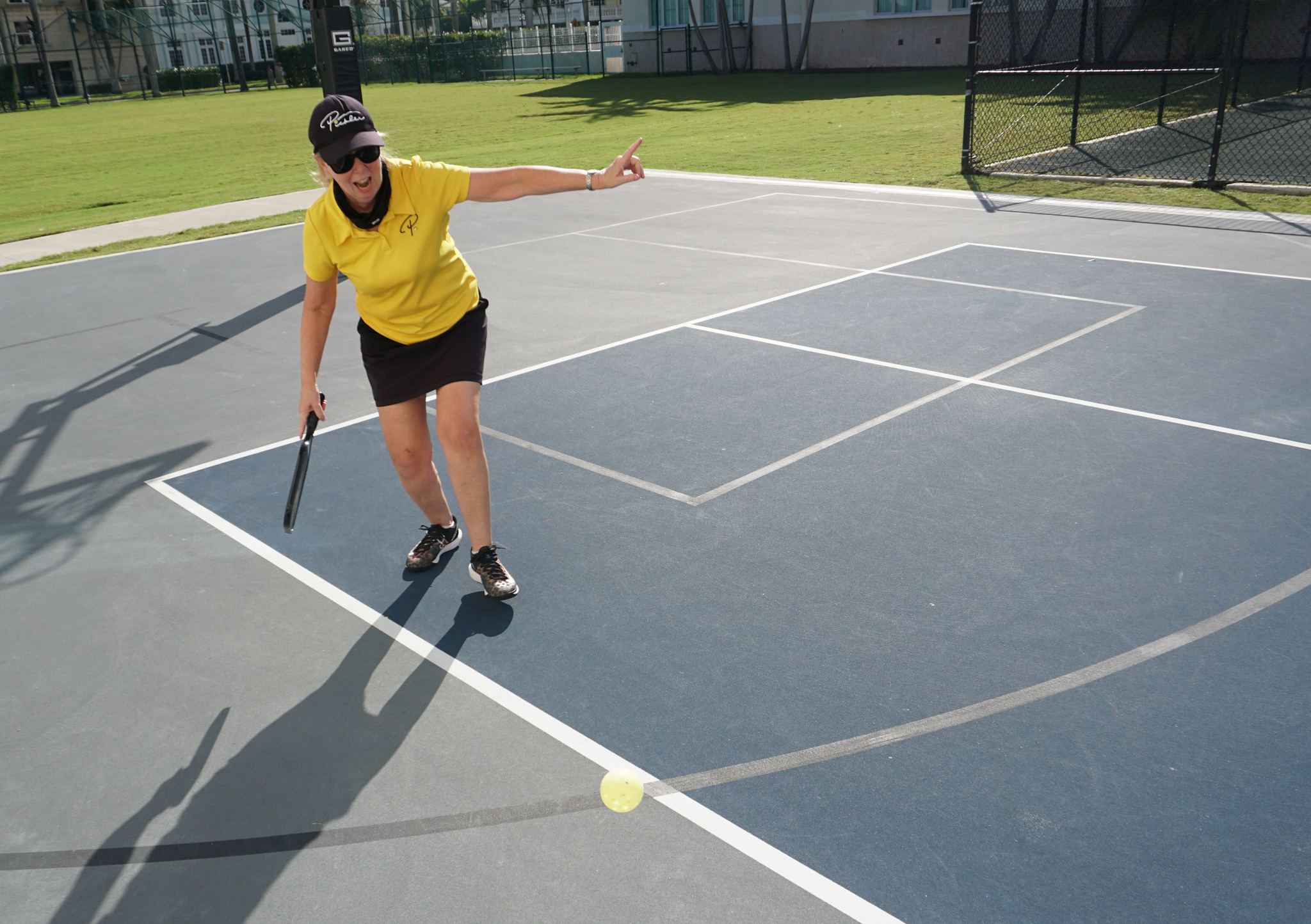
Positioning on the Court
Effective positioning on the court is vital for successfully navigating the double bounce rule. Players should concentrate on establishing a strong presence both at the baseline and the net, observing how the dynamics change with each bounce.
A fundamental strategy is to position oneself behind the baseline while serving or returning. This placement not only allows players to respect the double bounce rule but also provides an optimal range from which to evaluate the ball’s trajectory. Once they return the serve, players should gradually advance towards the net, as this strategic movement allows for better control of the game following each bounce.
Moreover, being aware of both your and your partner’s positioning while playing doubles is significant. Effective communication about court position helps reinforce tactical execution, as players can alternate responsibilities while covering expansive areas efficiently.
Anticipating the Ball’s Trajectory
The ability to anticipate the ball’s trajectory can make all the difference in a player’s success with the double bounce rule. Players should keenly observe their opponent’s movements, employing mental practices to predict where the ball is likely to go. Noticing subtleties such as the opponent’s stance and racket angle can offer critical hints about incoming shots.
Incorporating drills focused on response time and anticipation can refine a player’s ability to gauge ball trajectory. Activities such as practicing return shots with a partner and strategizing to target opponents’ weaknesses can allow players to capitalize on the confusion created by the double bounce rule and create opportunities for successful counters.
Tapping into one’s intuition and experience is a valuable asset when anticipating where to position one’s body and racket. Those who succeed in mastering shot prediction will benefit notably from a heightened ability to maneuver around the court efficiently.
Communication with Your Partner in Doubles
In doubles play, communication with your partner is critical for effectively navigating the double bounce rule and ensuring synchronized movements. Establishing a clear line of communication can mitigate confusion and bolster teamwork, contributing to victories on the court.
Players are encouraged to verbally communicate about on-court positioning, shot intentions, and decisions so that each player understands who will take which shots. This cooperative synergy minimizes the likelihood that one player will inadvertently violate the double bounce rule by rushing the ball or misjudging positioning.
Furthermore, discussing strategies and tactics beforehand not only builds rapport but also creates trust between partners. Mutual accountability fosters an environment where players can hold each other responsible for consistently upholding the integrity of the double bounce rule. A strong bond on the court often translates to better results, showcasing the power of effective teamwork.
Common Mistakes to Avoid
When navigating the double bounce rule of pickleball, awareness of common mistakes is key to improving overall gameplay. Recognizing these pitfalls and consciously working to avoid them can significantly enhance performance.
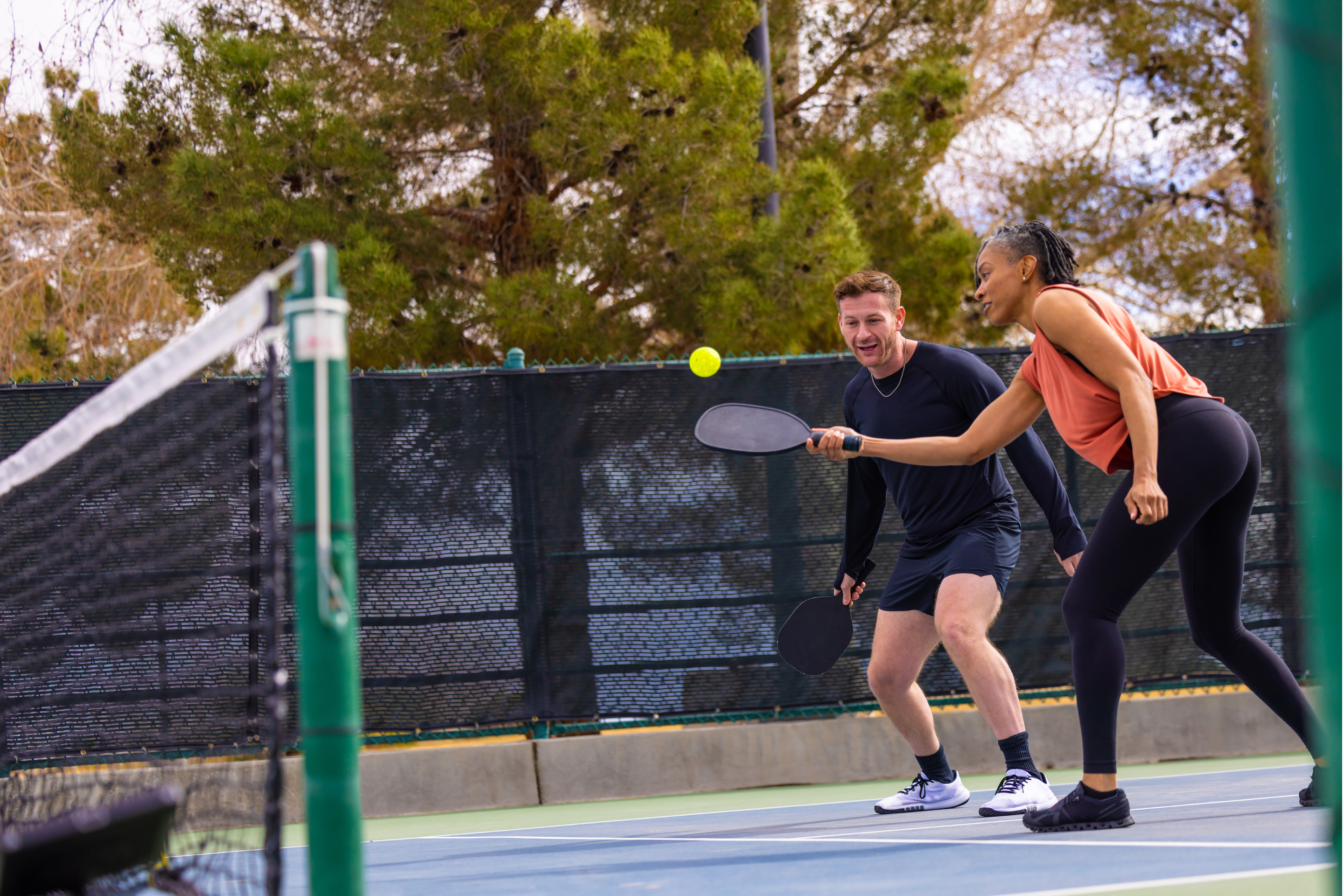
Hitting the Ball Before It Bounces
One of the most prevalent mistakes players make is hitting the ball before it bounces. This action not only constitutes a fault but also disrupts the flow of the game. The eagerness to strike the ball prompted by excitement or anxiety can inadvertently lead players to break the double bounce rule.
Encouraging players to remain patient and wait for the ball to hit the ground can improve their overall understanding of the rule. Practicing drills that emphasize waiting for proper bounce can cultivate much-needed discipline and encourage strategic play.
Incorrect Interpretations of the Rule
Another common mistake is holding incorrect interpretations of the double bounce rule. Misunderstandings can lead to confusion or frustration, especially among new players who might not be fully aware of the regulations.
It is crucial for players to familiarize themselves with the exact conditions of the rule clarifying that it specifically mandates a bounce on each side, but only applies at the start of each rally. Efforts to educate all players about the nuances of the double bounce rule can significantly streamline gameplay and improve overall match experiences.
Approaching the Net Too Early
Lastly, players sometimes make the error of approaching the net too early. Oftentimes, the anticipation to engage in net play can prompt players to move in before allowing the proper bounces to take place. This hasty maneuver can lead to faults and lost points.
Adopting a more patient mindset and understanding the importance of waiting for the balls’ bounces can improve one’s performance. Players should practice patience when returning serves and focus on their timing as they approach the net in order to maintain compliance with the double bounce rule.
Variations of the Double Bounce Rule
As with any sport, variations in rules can arise due to adaptations for different formats, player needs, and geographical preferences. In pickleball, understanding these variations of the double bounce rule is crucial for players who wish to engage in different contexts of play.
Adaptations for Wheelchair Pickleball
In wheelchair pickleball, the double bounce rule is adjusted to provide additional support for players utilizing wheelchairs. The adaptation allows for the ball to bounce up to two times before a player must return it. This important modification acknowledges the extra time required for wheelchair players to reach the ball and execute their shots effectively.
Additionally, the second bounce can occur anywhere on the playing surface, not just within the player’s designated court. These adaptations allow wheelchair players to engage in an inclusive yet competitive environment, allowing for equitable play and satisfaction at all levels.
Differences in Casual Play vs. Official Tournaments
When comparing casual play versus official tournaments, differences in enforcement of the double bounce rule can emerge. In casual settings, players might adopt more lenient interpretations of the double bounce rule. Players may overlook certain faults for the sake of enjoyment and camaraderie.
Conversely, in official tournaments governed by recognized bodies like USA Pickleball or the International Federation of Pickleball, adherence to the double bounce rule along with all other regulations is strictly enforced. Familiarizing oneself with the specific rules governing the environment where one plays is fundamental and encourages fair play while enhancing the competition’s quality.
Regional Variations in Interpretation
Regional variations can also influence the application of the double bounce rule. Different organizations or governing bodies may impart slight differences in their interpretations of this pivotal rule.
In some local tournaments, for instance, players might have variations that allow for more than one bounce after the serve, while others adhere strictly to the single-bounce rule for both sides. Being aware of and adjusting to regional rulings is critical for players to maintain compliance while avoiding unnecessary disqualification or penalties.
Resources for Further Learning
To deepen your understanding of the double bounce rule and overall gameplay strategies, there are several resources for further learning. From official rulebooks to community-driven educational platforms, players have a wealth of options at their fingertips.
Official Rulebooks and Regulations
The official rulebooks and regulations of pickleball are published by the USA Pickleball Association (USA PICKLEBALL), which provides comprehensive resources for players interested in mastering the game. The USA Pickleball Rulebook offers a definitive guide to the rules of play, including the nuances of the double bounce rule. Understanding and adhering to these regulations reinforces good practices on the court.
Recommended Training Videos
For visual learners, there are numerous recommended training videos available online that provide valuable insights into improving pickleball skills. Channels such as Briones Pickleball, Pickleball Kitchen, and The Pickleball Studio offer high-quality instructional videos that cross multiple skill levels, focusing on serving, returning, and understanding the intricacies of rules like the double bounce.
Moreover, the Pickleball FYI mobile app and website curate a variety of useful resources for players looking to refine their skills. Taking advantage of these training materials can enhance a player’s capability to navigate the rules effectively.
Pickleball Community and Online Forums
The pickleball community offers several online forums that can serve as a wealth of information for players seeking assistance. Websites like Pickleball Cafe and Pickleball Galaxy feature forums, FAQs, and community-driven discussions where players can inquire about specific aspects of the game and share their experiences regarding the double bounce rule.
In addition to these community resources, the USA Pickleball website hosts a Rules Facebook Group where players can participate in discussions about specific questions they may have regarding the rules. Engaging with fellow players in these contexts can broaden one’s understanding and amplify enjoyment of the sport.
In conclusion, the double bounce rule is an essential component of pickleball that governs how players should engage at the start of each rally. By grasping its definition, importance, misconceptions, and practical applications, players can truly elevate their gameplay experience. Mastery of this rule will not only lead to enhanced personal performance but also contribute to the overall integrity and enjoyment of pickleball. As the sport continues to grow, so too will the understanding and appreciation for the complex rules that shape its identity, inviting new players into its exhilarating folds.
